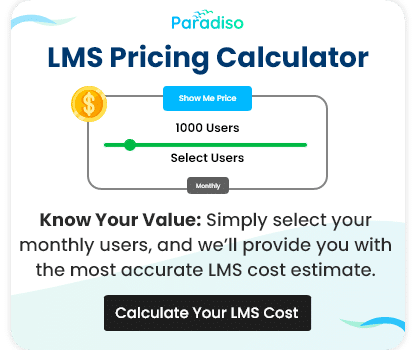In today’s fast-paced corporate world, continuous learning and development have become critical for organizational success. As companies strive to keep their workforce competitive and aligned with business goals, learning paths have emerged as a powerful strategy to structure and personalize employee training. But what exactly are learning paths, and how can organizations leverage them to boost employee performance and engagement? Let’s explore how you can create and implement effective learning paths for your employees using Paradiso LMS, a top-tier platform for personalized learning journeys.

The Ultimate Guide to Creating Effective Learning Paths in 2025
What Are Learning Paths?
Learning paths are structured learning programs designed to guide employees through a series of relevant training and educational content. Unlike traditional, one-size-fits-all training approaches, learning paths are tailored to meet the specific needs and career goals of the learner. They offer a clear roadmap of what needs to be learned and in what order, enabling employees to master skills progressively.
Learning paths differ from conventional training methods by being more targeted and dynamic. While traditional training often focuses on a generalized set of skills, learning paths take a more customized approach, offering specific courses, certifications, or content that align with an employee’s role or skillset.
Benefits of Learning Paths
For Employees:
Learning paths offer significant benefits to employees, including:
- Skill Development: By providing clear goals and the necessary resources to achieve them, learning paths help employees gain new skills and enhance their expertise.
- Career Growth: Well-structured learning paths facilitate career advancement by focusing on specific competencies that employees need to succeed in their roles or transition into new ones.
For Organizations:
Organizations also reap major benefits from learning paths, such as:
- Improved Productivity: By guiding employees through a structured, personalized learning experience, organizations can improve productivity and performance across teams.
- Compliance & Certification: Learning paths ensure employees complete necessary compliance or certification training, reducing risk and ensuring adherence to regulatory requirements.
- ROI: Personalized learning paths can lead to better retention rates, faster skill acquisition, and overall better-trained employees, leading to a measurable return on investment (ROI).
Types of Learning Paths
Learning paths can be tailored to meet the unique needs of employees and organizations. Here are the most common types:
- Role-Based Learning Paths: These paths are designed for employees in specific roles (e.g., sales, IT, leadership) and focus on the skills and knowledge required for that position.
- Skill-Based Learning Paths: These paths cater to specific skill sets, such as technical abilities or soft skills like communication and leadership.
- Compliance and Certification Paths: These are critical for industries where employees must maintain certifications or comply with regulatory standards.
- Onboarding and New Hire Training: Learning paths designed for onboarding help new employees become familiar with company culture, policies, and essential tools.
How to Design an Effective Learning Path
Creating an effective learning path requires careful planning and consideration of both employee needs and organizational goals. Here’s a step-by-step guide to designing an impactful learning path:
Identify Learning Objectives:
Clearly define the goals of the learning path. Are you aiming to upskill employees, onboard new hires, or ensure compliance with regulations? Establishing specific learning objectives is essential for structuring the path.
Assess Learner Needs:
Understand the individual needs of learners. Are they beginner-level employees or advanced professionals? This assessment will guide content selection and ensure the learning path is suitable for different knowledge levels.
Choose the Right Content Mix:
Select a combination of content formats (e.g., videos, courses, quizzes, readings) that will keep learners engaged and accommodate different learning styles. Interactive elements like quizzes and practical exercises can increase engagement and retention.
Use an LMS for Automation & Tracking:
Using a Learning Management System (LMS) like Paradiso LMS ensures automation of the learning process. Paradiso LMS allows seamless integration of learning paths, enabling automated enrollment, progress tracking, and reporting.
Measure Success with Analytics:
Using data and analytics to measure the effectiveness of learning paths is crucial. Track metrics such as completion rates, skills acquired, and feedback to continuously improve the learning experience.
Best Practices for Successful Learning Paths
To ensure that your learning paths are successful, keep these best practices in mind:
- Personalization & Adaptive Learning:
Tailoring learning paths to each employee’s skill level, career goals, and preferred learning style enhances engagement and ensures relevance. Paradiso LMS offers powerful personalization features to support adaptive learning, allowing the platform to adjust content based on user progress. - Gamification & Engagement Techniques:
Incorporating elements like badges, leaderboards, and progress tracking can gamify the learning experience, increasing motivation and engagement. - Regular Updates Based on Feedback:
Continuously update learning paths based on learner feedback and changing business needs. A dynamic learning path ensures that employees always have access to the latest resources and knowledge.
Tools & Technologies to Support Learning Paths
Implementing learning paths requires robust tools and technologies. Here are some top platforms and innovations to support your learning initiatives:
Top LMS Platforms:
Paradiso LMS, TalentLMS, and Moodle are popular platforms that offer seamless integration of learning paths into corporate training programs. Paradiso LMS stands out for its advanced personalization capabilities, multi-language support, and integration with various other enterprise tools.
AI and Automation in Learning Paths:
AI-driven platforms like Paradiso LMS, can provide personalized learning recommendations, track progress in real time, and automate repetitive tasks. This streamlines the learning process and maximizes efficiency.
Conclusion
In 2025, learning paths have proven to be more than just a trend—they’re a necessity for organizations looking to keep up with the rapidly changing corporate landscape. By implementing effective learning paths with a platform like Paradiso LMS, you can ensure that your employees are equipped with the skills and knowledge they need to thrive. Whether you’re focusing on role-based training, onboarding, or compliance, learning paths offer a structured and efficient way to meet organizational goals while fostering employee growth and engagement.
If you haven’t already, now is the time to create personalized learning journeys for your workforce. Leverage the power of Paradiso LMS to build learning paths that deliver measurable results and drive continuous development in your organization.










